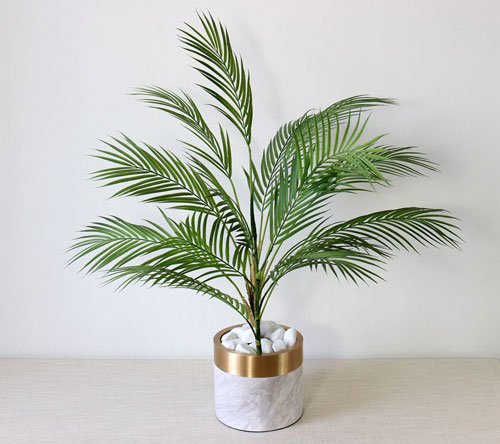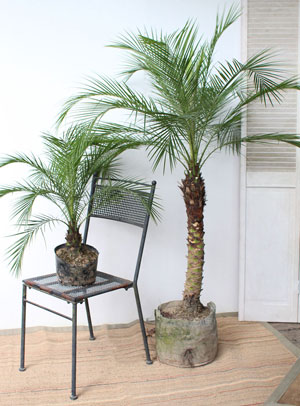Parlor Palm Plant Care: How to Care for a Parlor Palm Plant
Written by Iris
Dec 24 2021
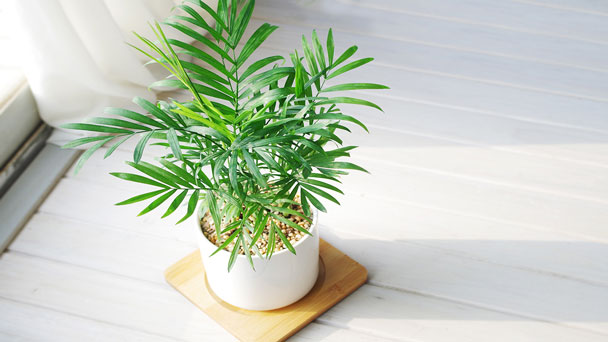
Parlor Palm Plants are lush and verdant throughout the year. They will not be withered easily, which are perfect for indoor potted plants. Parlor Palm Plants can be simply transplanted into a flower pot, and its ornamental degree is extremely high. Keep reading to learn how to care for a parlor palm plant.
Many online seed dealers handling tropical plants and palms do offer the seeds for sale. When it comes to propagating parlor palm seed, the fresher the seeds the greater chance you have of germination. If you do find a source for these palm seeds you might want to try planting several seeds to increase the possibility of some of them germinating.
The process for planting and germinating parlor palm seeds is basic and you will have the most success when outdoor temperatures are warm, unless you use a heat mat for indoor germination:
That being said, this is a slow-growing plant, and it will grow even more slowly if it doesn't get enough light. It helps to remember that the parlor palm is native to the floor of the South American jungle, and is used to dappled shade. These are considered low-light plants, but that doesn't mean "no-light." If there's a corner of your home that can emulate these conditions, your plant will be happiest there. Read Next: Best 15 Indoor Plants for Low Light 2021
Using a peat-based potting mix works well, as does most commercial, pre-mixed potting mixes. Many times, straight potting soils have a tendency to be too heavy, but you can use them as long as you cut them with another ingredient that has good drainage.
Some types of pre-mixed potting mixes have a slow-release fertilizer incorporated into them, which means you don’t have to feed the parlor palm as frequently, as the product usually continues feeding for around three months.
You can also create your own potting mix for the palm. Any of the following will work well:
If your parlor palm plant is dying or turning yellow despite you watering it regularly then it could mainly because of the soil is dry and you need to increase the frequency of water. If the leaves and their tips are getting brown even when the plant isn't getting much of sunlight, it could be the result of overwatering or too much fertilization. Chemical in water can also cause the parlor palm plant to turn brown, and to avoid this, it is advised that you use treated water for the plant as well. (Read more about watering Parlor Palm.)
Small palms'soil should be dried before giving water whereas you should wait for the 1 inch down the soil to dry before giving water. Also, look out for dry spots in the soil as it can cause the plant to wilt. So, make sure to water it all the way till the base. It is better to grow parlor palm in a well-drained soil so that water seeps through and you can be sure of proper watering. However, you need to ensure that excess water should be drained from the saucer in an hour so that you could prevent the roots from rotting.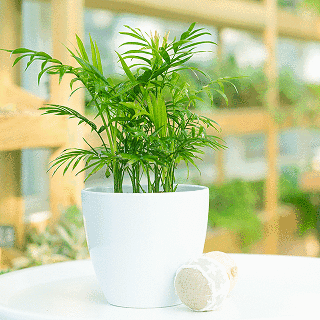
These type of fertilizers degrade slowly in the soil and continue feeding the palm with each water application. Depending on the particular brand, they usually don’t require a new application for around three months.
To keep the Parlor Palm thriving with healthy growth, fertilize about every three to four weeks with a water-soluble blend for houseplants. Just mix the product in the container you use for watering and apply with its regular water application. Only fertilize the Parlor Palm during the growing season of spring throughout summer. The palm is actively growing during this time of year. During winter while the palm is dormant, cease all fertilization until the warm temperatures of spring arrive.
Fertilizers can buildup in the soil after months of their use. Too much nutrient salts in the soil can burn the Parlor Palm’s foliage, so you will need to flush the soil periodically with fresh water to remove the salts. The process of flushing the soil is relatively easy:
For smaller Parlor Palms, take the container to the sink and allow a slow stream of water to run through the soil for about five minutes. Allow the container to drain before placing back in its preferred location.
Prepare new basin and new soil with good permeability first, disinfect and reserve. Then remove the parlor palm plant from its original pot and shake it gently to shake off any old soil at the bottom. Put the new soil into the new pot, plant the parlor palm plant into it, and put it in a warm position of about 20℃ to adapt to the new pot. During adaptation, give appropriate shading, control water, and stop fertilizer. After a few days, it will be fully adapted to the new pot and soil.
The only reason to prune back a healthy stem is if it starts to rub against another part of the plant. The friction between the stems can open up a wound and leave it vulnerable to bacterial and fungal infections.
The web-like structure you see on the plants is due to spider mites. The mites can also cause pale color of leaves. Hence, as discussed, mild soap water should be sprayed on the leaves but refrain from using any solution that contains alcohol as a constituent because this can cause the plant to die. Parlor palm plants are very sensitive in nature and hence, don’t use anything that is working for some other plant. However, if you see sticky white spots on the back of the leaves, these are the result of a house pest, mealy bugs. Clear the white powder with the help of Q-tip dipped in alcohol after this, spray the leaves with mild soap water. This will help you to cease infestation. If you see any new growth or a young leaf curved up, make sure you have sprayed inside it. You also need to be careful of stem coverings and don’t forget to spray inside them. Three treatments with the gap of 10 days should help you to get rid of the infestation.
However, if you could still see the infestations even after this, it is recommended that you consult your gardener or use a professional insecticidal soap.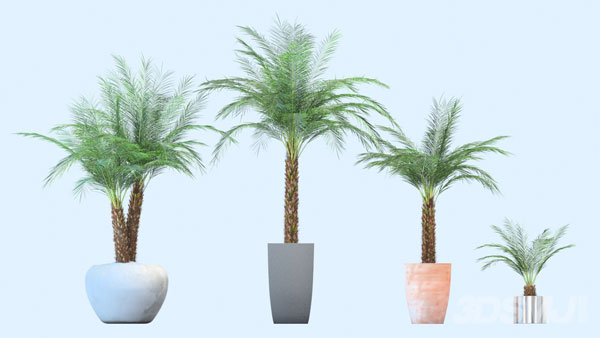
C. erumpens is a bamboo palm that originates slightly further south than C. elegans and is a bit larger, with more fan-like leaves.
C. hooperiana is a newer variety that resembles a kentia palm with its large, dramatic palm-shaped leaves. It's a vigorous plant that's easy to grow.
The other reasons for Parlor palm brown tips include overwatering causing rot, or too much soluble salts in the soil due to fertilizers. Many times in a palm, the roots are already starting to suffer damage from wet conditions before it shows on the foliage.
If fertilization isn't the problem and the soil is too soggy, stop watering and allow the soil to completely dry before you water again. If the soil is too heavy, you will need to repot the Parlor Palm into a more lightweight potting mix. Just check the roots to make sure they aren’t turning mushy from rot. If several are damaged you can trim them off, but if large sections are affected, the Parlor palm might die.
If you aren't overwatering but applying fertilizer, you probably need to flush the salt buildup from the soil. Allow a slow stream of water to run through the soil for about five minutes and then allow it to drain. Only fertilize the Parlor palm every three to four weeks using a water-soluble blend for houseplants and flush the soil about every four months.
The parlor palm has strong vitality, loves water, and is shade-tolerant, making it easy to grow in either water or soil.
The root system of parlor palm is thin and underdeveloped, and the new root initiation is slow in hydroponic environment. However, the old roots are firm and not easy to perishable. Generally, the roots don’t need to prune before growing in water.
Water parlor palm 2 or 3 times a day in summer and control the amount of water in winter. Wash the fixed base 6-8 weeks, especially in summer, to prevent harmful substances from harming the parlor palm plant. It is necessary to check the pH value of the nutrient solution of hydroponic parlor palm frequently. Too much alkali will make the parlor palm leaves turn yellow. During the growing season, the nutrient solution for hydroponics is applied every 2-3 weeks.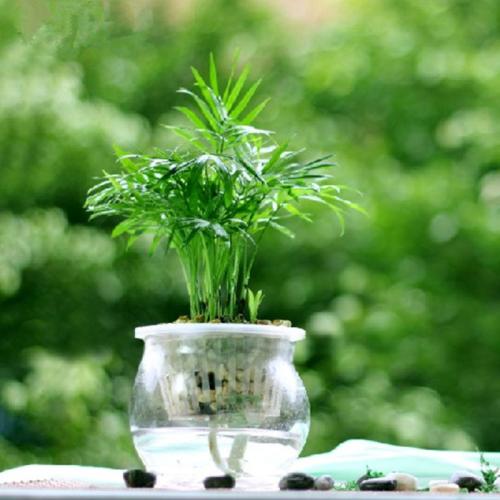
The plant also uses its leaves to tell you what's wrong. If they're yellow, it's thirsty or in need of plant food. If the leaves are spotted, the roots are beginning to rot from too much water. If they’re rapidly turning brown, the problem is pests. Your plant should perk up if you can address these issues.
Read More:
Why Are My Parlor Palm Drooping?
Read Next:
Best 15 Indoor Plants for Low Light 2021
20 Best Indoor Trees
35 Most Common House Plant in 2021
Parlor Palm Plant Quick InfoWhere to Grow Parlor PalmHow to Propagate Parlor Palm PlantParlor Palm Plant Propagation from SeedsParlor Palm Plant Propagation with DivisionHow to Care for Parlor Palm Plant Parlor Palm Light RequirementsParlor Palm Soil CareParlor Palm WateringParlor Palm Temperature & Humidity CareParlor Palm FertilizerParlor Palm RepottingParlor Palm PruningParlor Palm Pests & Diseases CareVarieties of Parlor Palm PlantParlor Palm Plant Care FAQWhy Are The Leaf Tips On My Parlor Palm Turning Brown?Can Parlor Palm Grow in Water?How Can I Revive a Dying Parlor Palm?Are Parlor Palms Toxic To Cats?Does A Parlor Palm Bloom?
Parlor Palm Plant Quick Info
The parlor palm is one of the most popular indoor palms, favored because it adapts to relatively low light and handles lower temperatures, which make it a easy-care indoor plant for beginner. It’s also an excellent air purifier. Read More: Best 20 Air Purifying House Plants| Common Name | Parlor palm, Bamboo Palm, Neanthe bella palm |
| Botanical/Scientific Name | Chamaedorea elegans |
| Plant Type | Palm |
| Mature Size | 2-6 feet tall, 2-3-feet spread as a houseplant |
| Light Requirements | Low to bright, indirect light |
| Soil | Well-drained cactus, palm, or potting mix |
| Bloom Time | Spring; rarely blooms indoors |
| Flower Color | Yellow |
| Toxic | Non-toxic to cats and dogs. |
| Uses | Low light indoor plant, Air Purifying House Plant |
Where to Grow Parlor Palm
Parlor palm plants do best in bright, indirect light but will tolerate a bit of shade. Avoid direct sunlight, as this will scorch the leaves, and keep away from draughts. parlor palm plants need a warm room – ideally around 18°-24°C, with a minimum of 10°C.How to Propagate Parlor Palm Plant
Parlor Palm Plant Propagation from Seeds
Propagating Parlor Palms can be done through growing seeds. However, due to indoor light conditions not being adequate for a Parlor palm to bloom, which then results in the formation of small, black seeds, don’t be surprised if yours never goes through the blooming or seed-bearing stage while as a houseplant.Many online seed dealers handling tropical plants and palms do offer the seeds for sale. When it comes to propagating parlor palm seed, the fresher the seeds the greater chance you have of germination. If you do find a source for these palm seeds you might want to try planting several seeds to increase the possibility of some of them germinating.
The process for planting and germinating parlor palm seeds is basic and you will have the most success when outdoor temperatures are warm, unless you use a heat mat for indoor germination:
- Fill a seed-starting tray or small, 4-inch containers with a lightweight, well-drained potting mix. Make sure the containers have bottom drainage. Water the soil to settle it.
- Plant a Parlor Palm seed about 1/4 inch deep into the soil and cover with the potting mix. If planting multiple seeds in a tray, space the seeds several inches apart. Water the soil again.
- If starting the Parlor Palm seeds outdoors, place in the warmest area of your outside space. Seed germination is best when temperatures range between 85°F to 95°F.
- If starting the seeds indoors, place the trays on a heat mat set at around 85°F.
- Keep the potting mix moist but not soggy. If the top of the soil feels dry, water.
Parlor Palm Plant Propagation with Division
While it's possible to propagate parlor palm by dividing one of the clumps of stems in your existing plant, you may see some die-back of foliage on both the new plant and the mother plant, which can be cut away from the healthy leaves. Start with a parlor palm that has several healthy stems growing in its container.- Choose a pot that’s an appropriate size to hold a single stem from the mother plant. Fill it with a soilless mix of equal parts peat moss and either vermiculite or perlite.
- Gently remove the mother plant from its container. Loosen the soil around the root ball to expose its bare roots.
- Look for a healthy-looking, established stem with its own root system. Carefully cut away any roots connecting it to the main plant with a clean, sharp blade.
- Plant your new stem in the pot with the soilless mix, ensuring the roots and stem are covered by soil. Put the mother plant back into its original container, filling it in with fresh soil. Water so that the soil is moist. Keep both the mother plant and the new plant in a warm, shady spot to recover, and then care for them as usual.
How to Care for Parlor Palm Plant
Parlor Palm Light Requirements
The parlor palm doesn't tolerate direct sunlight well. It will withstand an hour or two in the morning or late evening, but the afternoon sun will singe the leaves. It's far better to keep it behind a net curtain or a few feet away from the glass. (Read more about Parlor Palm Light Requirements.)That being said, this is a slow-growing plant, and it will grow even more slowly if it doesn't get enough light. It helps to remember that the parlor palm is native to the floor of the South American jungle, and is used to dappled shade. These are considered low-light plants, but that doesn't mean "no-light." If there's a corner of your home that can emulate these conditions, your plant will be happiest there. Read Next: Best 15 Indoor Plants for Low Light 2021
Parlor Palm Soil Care
For the best growth and performance, grow Parlor Palm in a rich potting medium that drains well. If the soil is too heavy and has a tendency to retain too much water you can end up with rot problems and may even lose the palm. (Read more about Parlor Palm Soil.)Using a peat-based potting mix works well, as does most commercial, pre-mixed potting mixes. Many times, straight potting soils have a tendency to be too heavy, but you can use them as long as you cut them with another ingredient that has good drainage.
Some types of pre-mixed potting mixes have a slow-release fertilizer incorporated into them, which means you don’t have to feed the parlor palm as frequently, as the product usually continues feeding for around three months.
You can also create your own potting mix for the palm. Any of the following will work well:
- Mix one part potting soil, one part coarse sand
- Mix one part peat, one part coarse sand, one part potting soil
- Mix one part compost, one part peat, one part perlite
Parlor Palm Watering
Like with every other plant, watering is the key to the life and lushness of a parlor palm plant. While overwatering can lead to the rotting of roots, you don't want the plant to underwater as well because the plant can wilt and ultimately die. You need to focus on the surface soil and as it dries up to about 50%, it is time to water the plant. Water to an extent that surface is wet. However, if you are keeping the plant in bright light, you might require to water it twice or thrice in a day.If your parlor palm plant is dying or turning yellow despite you watering it regularly then it could mainly because of the soil is dry and you need to increase the frequency of water. If the leaves and their tips are getting brown even when the plant isn't getting much of sunlight, it could be the result of overwatering or too much fertilization. Chemical in water can also cause the parlor palm plant to turn brown, and to avoid this, it is advised that you use treated water for the plant as well. (Read more about watering Parlor Palm.)
Small palms'soil should be dried before giving water whereas you should wait for the 1 inch down the soil to dry before giving water. Also, look out for dry spots in the soil as it can cause the plant to wilt. So, make sure to water it all the way till the base. It is better to grow parlor palm in a well-drained soil so that water seeps through and you can be sure of proper watering. However, you need to ensure that excess water should be drained from the saucer in an hour so that you could prevent the roots from rotting.

Parlor Palm Temperature & Humidity Care
The parlor palm prefers room temperatures between 65 and 80 degrees Fahrenheit. It can tolerate a low of 50 degrees but will die if touched by frost. Keep parlor palm plants away from cold drafts near windows, vents, and outside doors. It will thrive with average humidity. If your parlor palm begins to develop dry leaf margins or brown tips, it's most likely caused by cold drafts or prolonged dry periods.2 To remedy this situation, raise the humidity levels before overwatering.Parlor Palm Fertilizer
Besides growing Parlor Palm in a fertile soil mixture, which continuously feeds the plant’s roots with nutrients, it is important to fertilize regularly. If you planted it in a potting mix that contained a slow-release fertilizer blend, then you will not have to worry about additional feedings for about three months.These type of fertilizers degrade slowly in the soil and continue feeding the palm with each water application. Depending on the particular brand, they usually don’t require a new application for around three months.
To keep the Parlor Palm thriving with healthy growth, fertilize about every three to four weeks with a water-soluble blend for houseplants. Just mix the product in the container you use for watering and apply with its regular water application. Only fertilize the Parlor Palm during the growing season of spring throughout summer. The palm is actively growing during this time of year. During winter while the palm is dormant, cease all fertilization until the warm temperatures of spring arrive.
Fertilizers can buildup in the soil after months of their use. Too much nutrient salts in the soil can burn the Parlor Palm’s foliage, so you will need to flush the soil periodically with fresh water to remove the salts. The process of flushing the soil is relatively easy:
For smaller Parlor Palms, take the container to the sink and allow a slow stream of water to run through the soil for about five minutes. Allow the container to drain before placing back in its preferred location.
Parlor Palm Repotting
It is recommended to repot parlor palm in spring. Because the temperature in spring is warmer, it is very suitable for the plant growth after repotting. Try not to repot parlor palm when the temperature is very high in summer or very low in winter, when the temperature is too high or too low.Prepare new basin and new soil with good permeability first, disinfect and reserve. Then remove the parlor palm plant from its original pot and shake it gently to shake off any old soil at the bottom. Put the new soil into the new pot, plant the parlor palm plant into it, and put it in a warm position of about 20℃ to adapt to the new pot. During adaptation, give appropriate shading, control water, and stop fertilizer. After a few days, it will be fully adapted to the new pot and soil.
Parlor Palm Pruning
Some of your parlor palm's lower branches will naturally die off as new growth emerges. You should always remove those to help your plant to conserve its energy and keep it looking neat. However, you must never trim healthy growth on this plant because, if a branch is cut, it will stop growing completely.The only reason to prune back a healthy stem is if it starts to rub against another part of the plant. The friction between the stems can open up a wound and leave it vulnerable to bacterial and fungal infections.
Parlor Palm Pests & Diseases Care
Bugs like spider mites and mealy bugs feed on the leaves of parlor palm plants. You can try spraying the leaves with warm and mild soapy water. However, more serious infestation would need professional insecticidal soap to debug the plant.The web-like structure you see on the plants is due to spider mites. The mites can also cause pale color of leaves. Hence, as discussed, mild soap water should be sprayed on the leaves but refrain from using any solution that contains alcohol as a constituent because this can cause the plant to die. Parlor palm plants are very sensitive in nature and hence, don’t use anything that is working for some other plant. However, if you see sticky white spots on the back of the leaves, these are the result of a house pest, mealy bugs. Clear the white powder with the help of Q-tip dipped in alcohol after this, spray the leaves with mild soap water. This will help you to cease infestation. If you see any new growth or a young leaf curved up, make sure you have sprayed inside it. You also need to be careful of stem coverings and don’t forget to spray inside them. Three treatments with the gap of 10 days should help you to get rid of the infestation.
However, if you could still see the infestations even after this, it is recommended that you consult your gardener or use a professional insecticidal soap.

Varieties of Parlor Palm Plant
C. elegans is the most popular type of parlor palm. It's native to Mexico and Central America and is sometimes used in dish gardens.C. erumpens is a bamboo palm that originates slightly further south than C. elegans and is a bit larger, with more fan-like leaves.
C. hooperiana is a newer variety that resembles a kentia palm with its large, dramatic palm-shaped leaves. It's a vigorous plant that's easy to grow.

Parlor Palm Plant Care FAQ
Why Are The Leaf Tips On My Parlor Palm Turning Brown?
There are several reasons why your Parlor Palm's leaf tips are turning brown. As a palm frond naturally starts dying, the leaf tips brown and the browning eventually covers the entire frond to where it's attached to the trunk. This is a normal occurrence and the frond will naturally fall from the trunk or you can prune it off after it browns completely.The other reasons for Parlor palm brown tips include overwatering causing rot, or too much soluble salts in the soil due to fertilizers. Many times in a palm, the roots are already starting to suffer damage from wet conditions before it shows on the foliage.
If fertilization isn't the problem and the soil is too soggy, stop watering and allow the soil to completely dry before you water again. If the soil is too heavy, you will need to repot the Parlor Palm into a more lightweight potting mix. Just check the roots to make sure they aren’t turning mushy from rot. If several are damaged you can trim them off, but if large sections are affected, the Parlor palm might die.
If you aren't overwatering but applying fertilizer, you probably need to flush the salt buildup from the soil. Allow a slow stream of water to run through the soil for about five minutes and then allow it to drain. Only fertilize the Parlor palm every three to four weeks using a water-soluble blend for houseplants and flush the soil about every four months.
Can Parlor Palm Grow in Water?
Parlor palm can grow in water.The parlor palm has strong vitality, loves water, and is shade-tolerant, making it easy to grow in either water or soil.
The root system of parlor palm is thin and underdeveloped, and the new root initiation is slow in hydroponic environment. However, the old roots are firm and not easy to perishable. Generally, the roots don’t need to prune before growing in water.
Water parlor palm 2 or 3 times a day in summer and control the amount of water in winter. Wash the fixed base 6-8 weeks, especially in summer, to prevent harmful substances from harming the parlor palm plant. It is necessary to check the pH value of the nutrient solution of hydroponic parlor palm frequently. Too much alkali will make the parlor palm leaves turn yellow. During the growing season, the nutrient solution for hydroponics is applied every 2-3 weeks.

How Can I Revive a Dying Parlor Palm?
If your parlor palm is droop and dying, you'll need to troubleshoot quite quickly to figure out what the problem is. The stems are supposed to bend slightly but, if it’s too cold at night or if it’s getting too much direct sun, it starts to sag. Consider the conditions the plant has throughout the whole day and see if you can solve the problem by moving it.The plant also uses its leaves to tell you what's wrong. If they're yellow, it's thirsty or in need of plant food. If the leaves are spotted, the roots are beginning to rot from too much water. If they’re rapidly turning brown, the problem is pests. Your plant should perk up if you can address these issues.
Read More:
Why Are My Parlor Palm Drooping?
Are Parlor Palms Toxic To Cats?
Parlor palms are considered non-toxic to cats, dogs and people. (Read more about Parlor palm toxicity.)Does A Parlor Palm Bloom?
It rarely blooms indoors when the light condition is not meet the requirements of blooming flowers. When grown outdoors in ideal conditions, it can take quite a few years of growing before a Parlor Palm bloom, which produces sprays of small yellow flowers in summer that change to small and round black fruits containing seeds. You can use these seed to propagate Parlor Palm.Read Next:
Best 15 Indoor Plants for Low Light 2021
20 Best Indoor Trees
35 Most Common House Plant in 2021
Latest Updated
- Benefits of Bugleweed - 7 Science-backed Health Benefits
- Bugleweed Dangers & Side Effects - Is It Poisonous?
- How to Plant Evergreen Trees - What You Should Know
- When to Plant Evergreens - Grow Guide for Evergreen Trees
- 12 Wonderful Evergreen Shrubs for Your Garden
- 12 Popular Evergreen Plants with Pictures for Beginners
- When And How To Prune A Lilac Bush Like a Pro
- How to Grow & Care for Lilac Vine (Hardenbergia Violacea)
- Japanese Lilac Tree (Syringa Reticulata) Care & Propagation Guide
- Shumard Oak Pros and Cons - What to Know
Popular Articles
- Winter maintenance of Antirrhinum Majus
- How to Grow Terminalia Mantaly Tree
- How to Grow and Care for Crossostephium Chinense
- How to grow Antirrhinum Majus in spring
- Peristeria Elata (Dove Orchid) Profile: Info & Care Guide
- Underwatered Snake Plant (Sansevieria Trifasciata) - Signs And How To Fix
- How to Care for Brazilian Jasmine Plant (Mandevilla Sanderi)
- How to Grow & Care for Graptopetalum Purple Delight in Summer
- Rosa Chinensis (China Rose): Plant Growing & Care Tips
- How to Care for Baby Sun Rose (Aptenia Cordifolia)
